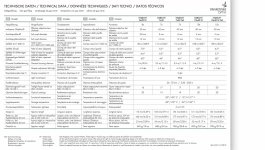I am still contemplating buying a Habicht.
It is only going to be used for low light work, evenings and dawn.
My Leica 8x32 BN will still be my daily use bin, it's perfect.
So...
For twighlight viewing, and bearing in mind I am 55 yrs old, so pupils i guess max out at 5mm if i'm lucky...
Is the 10x40 better than the 7x42 ??
At my age, will the greater magnification of the 10x outweigh the 6mm exit pupil of the 7x for low light ??
I can't do a direct comparisons of these models easily, at low light times...
So thought I would throw it out to the knowledgeable folk here...
Thanks
It is only going to be used for low light work, evenings and dawn.
My Leica 8x32 BN will still be my daily use bin, it's perfect.
So...
For twighlight viewing, and bearing in mind I am 55 yrs old, so pupils i guess max out at 5mm if i'm lucky...
Is the 10x40 better than the 7x42 ??
At my age, will the greater magnification of the 10x outweigh the 6mm exit pupil of the 7x for low light ??
I can't do a direct comparisons of these models easily, at low light times...
So thought I would throw it out to the knowledgeable folk here...
Thanks











